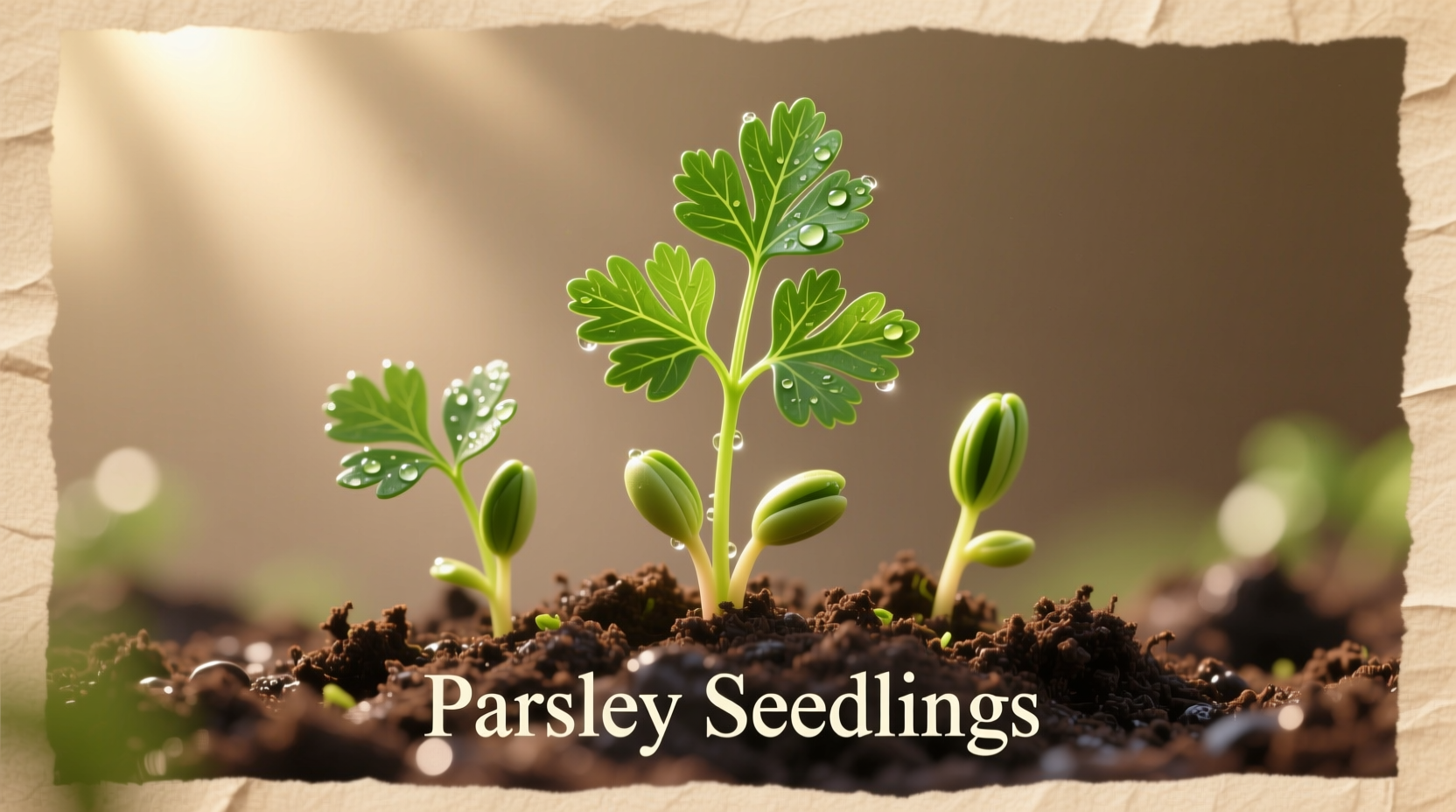Discover exactly what to expect when growing parsley from seed and how to nurture your seedlings into productive plants. Whether you're starting your first herb garden or refining your technique, this guide delivers actionable steps backed by horticultural science to ensure your parsley thrives from germination to harvest.
Identifying True Parsley Seedlings
Many gardeners mistake young parsley for weeds due to its slow germination. Understanding the visual progression prevents accidental removal of valuable seedlings:
| Stage | Appearance | Timeline | Key Identification Features |
|---|---|---|---|
| Cotyledon stage | Two rounded leaves | 2-4 weeks after planting | Smooth edges, uniform green color, no serration |
| True leaf emergence | Feathery, compound leaves | 5-7 days after cotyledons | Distinctive parsley aroma when crushed, serrated leaflets |
| Established seedling | Multiple leaf clusters | 4-6 weeks after planting | Clear parsley scent, 3-6 inch height, vibrant green color |
According to the University of Minnesota Extension, parsley's slow germination (up to 28 days) makes accurate identification crucial. The distinctive aroma of true leaves provides the most reliable identification method when visual cues are ambiguous (extension.umn.edu).
Creating Ideal Growing Conditions
Parsley seedlings require specific environmental conditions that differ from mature plants. Getting these early conditions right establishes the foundation for healthy growth:
Light Requirements for Young Plants
While mature parsley tolerates full sun, seedlings need protection from intense afternoon rays. Provide 4-6 hours of morning sunlight with afternoon shade during the first six weeks. Direct midday sun scorches delicate seedlings, causing stunted growth and yellowing leaves. A shaded porch or filtered light through lattice works perfectly during this critical establishment phase.
Moisture Management Techniques
Maintain consistent soil moisture without waterlogging. The soil should feel like a damp sponge—moist but not dripping when squeezed. Water seedlings daily during dry periods, preferably in the morning. Use a spray bottle for the first two weeks to avoid disturbing delicate roots, then switch to bottom watering as plants mature. The Royal Horticultural Society notes that inconsistent moisture causes parsley's taproot to fork, reducing overall plant vigor (rhs.org.uk).

Step-by-Step Seedling Care Routine
Follow this practical timeline to nurture your parsley from sprout to harvest-ready plant:
Weeks 1-2: Germination Phase
- Keep soil consistently moist using a spray bottle
- Maintain soil temperature between 60-75°F (15-24°C)
- Expect first sprouts in 14-28 days—patience is essential
Weeks 3-4: True Leaf Development
- Thin seedlings to 2 inches apart when first true leaves appear
- Begin gentle liquid seaweed fertilizer applications
- Monitor for aphids and spider mites on new growth
Weeks 5-6: Establishment Phase
- Final thinning to 6-8 inches between plants
- Introduce gradual exposure to full sun if growing outdoors
- Start harvesting outer leaves when plants reach 6 inches tall
Troubleshooting Common Seedling Problems
Address these frequent parsley seedling issues before they become serious problems:
Yellowing Leaves
Often indicates overwatering or nitrogen deficiency. Reduce watering frequency and apply diluted fish emulsion (1 tablespoon per gallon). Ensure containers have adequate drainage holes. The USDA notes that parsley's deep taproot makes it particularly vulnerable to waterlogged conditions (plants.usda.gov).
Leggy, Weak Growth
Insufficient light causes elongated stems as seedlings stretch toward light sources. Provide supplemental lighting with a grow light 6 inches above plants for 12-14 hours daily. Rotate containers regularly for even growth. Remember that parsley seedlings require brighter light than many other herb seedlings during early development.
Poor Germination Rates
Parsley seeds have notoriously low germination rates (40-60%). Improve success by:
- Soaking seeds in warm water for 24 hours before planting
- Using fresh seeds (less than 1 year old)
- Planting at proper depth (1/4 inch)
- Maintaining consistent soil temperature
Transplanting and Long-Term Success
Transplant parsley seedlings when they have 3-4 sets of true leaves and outdoor temperatures remain above 50°F (10°C) at night. Follow these steps for successful transplantation:
- Begin hardening off seedlings 7-10 days before transplanting
- Choose a cloudy day or late afternoon for transplanting
- Dig holes twice as wide as the root ball
- Plant at the same soil depth as in containers
- Water thoroughly and mulch with straw
For container growing, select pots at least 8 inches deep to accommodate parsley's taproot. Use a high-quality potting mix with added perlite for drainage. Container-grown parsley requires more frequent watering but benefits from easier mobility to optimize light conditions throughout the growing season.
Harvesting for Continuous Production
Begin harvesting outer leaves when plants reach 6 inches tall, never removing more than one-third of the plant at once. Regular harvesting encourages bushier growth and extends the productive life of your parsley. Morning harvests yield the highest essential oil concentration for maximum flavor. Remember that flat-leaf varieties generally develop stronger flavor than curly types, making them preferred for culinary applications.











 浙公网安备
33010002000092号
浙公网安备
33010002000092号 浙B2-20120091-4
浙B2-20120091-4